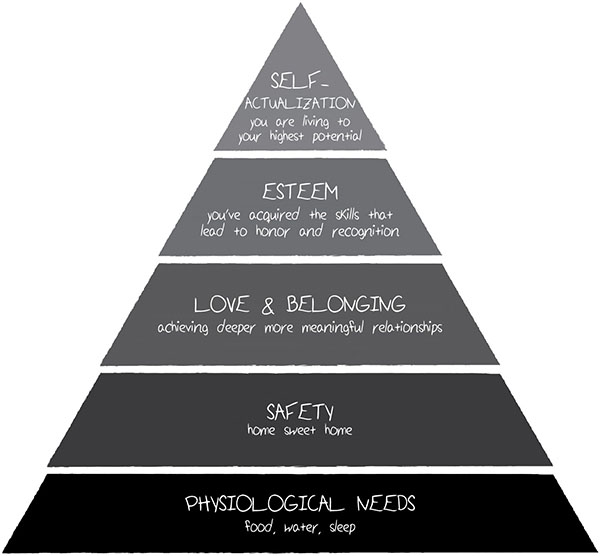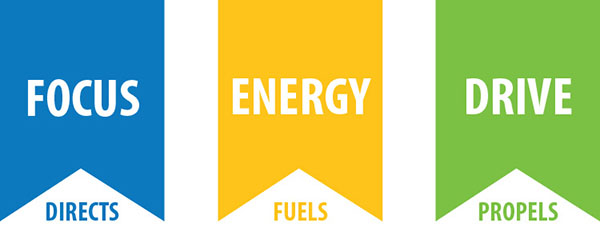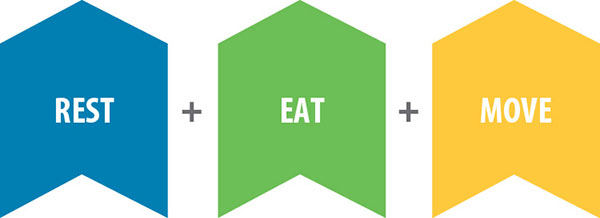4
Human Capital Is the Future!
Keeneland, Kentucky, is one of the top venues for thoroughbred horseracing. The Saturdays in the fall remind you of a college football atmosphere—the energy is electric! Everyone is decked out—the men in their suits and ties, and the women in their dresses and hats. One by one the horses for each race come out. If you have never seen a thoroughbred racehorse up close, this is a sight to see. These animals are perfect. They are graceful, sleek, and muscular; their eyes are clear and their coats are shiny and colorful. They are built for speed! Every horse looks extremely fit and fast, but only some have what it takes to be the best.
Winning the United States Triple Crown is the pinnacle of thoroughbred horseracing. Since 1875, the first year in which all three races occurred, only 12 horses have accomplished this rare feat.
What makes winning the Triple Crown so elusive? Capacity! The winner must have a combination of speed, strength, endurance, intelligence, and lots of grit. It is very difficult to measure grit or heart—but every Triple Crown winner must have the heart to push beyond his or her comfort zone!
The Triple Crown consists of three races:
- Kentucky Derby—1¼ miles
- Preakness Stakes—13/16 miles
- Belmont Stakes—1½ miles
The Kentucky Derby is a sprint, at just over a mile. The Belmont Stakes is the longest of the three races and is a beast, a real test of endurance and heart. To win the Triple Crown, the entire racing team—including the trainer, jockey, and horse—must have the capacity to perform in all three distances under varying conditions.
Now imagine if you owned a $5 million thoroughbred racehorse. How would you take care of your racehorse? Most likely you would do everything in your power to protect your investment; you would give your horse all the resources it needed to perform at its best: plenty of rest, quality water, only the most nutritious grasses and grains, and the right amount of exercise.
Now compare a thoroughbred racehorse to a typical mule working on a farm. In most cases the mule is overworked and undernourished; the owner is trying to get the most out of the mule before it begins to break down! We see this happening more and more within many organizations. Even though it is not the intent, organizations aren’t treating their people in a way that creates peak performance. As demands continue to grow, how is your organization investing in its future? How is it investing in its people?
Growing Your Greatest Resource
As the organizational landscape continues to change, the way we currently develop our people is growing obsolete. What does the future of your organization hold? What does the future of your organization need? When it comes to the future of creating the best organizations or making the greatest impact on our world, the obvious sign is our people—people are the future.
Human capital is our greatest resource and in many cases also our most overlooked resource. We are looking externally versus internally to find methods to increase performance and increase profitability. We have become fixated on the power of technology, but we have become ignorant of the infinite ability of the human mind and body!
Technology advances have been incredible and will continue to expand and grow: computers, smartphones, electronic devices, social media platforms, satellites, space travel, virtual reality, military, IT developments—the list is long and will continue to make a huge impact on our world. What if we invested at a similar pace in our people? The long-term differentiator of any organization when compared to others is people, the mind and body behind the technology.
In 2017 the United States launched the most expensive military ship in history, the USS Gerald R. Ford (Figure 4.1), which came in at over $10 billion—$12.8 billion to be exact. The USS Gerald R. Ford is an incredible military advancement and an incredible capital investment; there is no denying the power and performance capabilities. One fact many forget is that it is complemented by 5,000 people. Imagine if the mindset around expanding human capital was equally as important, if not more?

FIGURE 4.1 Military ship.
What if we became as sophisticated at using our human resources as we are with our technology resources?
The History Channel had a series called The Selection: Special Operations Experiment, produced by Peter Berg. This show places 30 men and women with no military background through the most intense physical and mental challenge of their lives. These 30 individuals are led by veterans of the Navy SEALs, Green Berets, and Army Rangers. The instructors try to push the 30 individuals as far as they can go. Only 4 of the 30 make it. During episode 3, Bert Kuntz, a veteran Green Beret, had a wonderful description of the value of human capital and what it means for the future:
The United States military has hands down the most expensive military equipment in the history of the world, but hands down the most precious equipment it has and will always have is humans.
As with the USS Gerald R. Ford and other advances and innovations, let’s look toward the future, but let’s start by building the foundation of our greatest resource.
Foundational Pillars
If you were going to build any organization from the ground up, what would you do? Where would you begin? I think most would agree, to build the best organization you would begin with people—go out and get the best and brightest people. If this is true, then what?
Many of us have studied or heard of Abraham Maslow’s hierarchy of human needs (Figure 4.2) and how it relates to the needs and desires of people. Maslow, an American psychologist, noticed while working with monkeys that certain needs take precedence over others. Maslow discovered that the monkeys would not move up their hierarchy of needs until the needs below were met. For example, if the monkeys were thirsty, drinking would take precedence over eating and up the hierarchy they would go. Maslow created his hierarchy of human needs based on what he learned from his studies with monkeys. Maslow then laid out his five layers of human needs: physiological needs, safety, love and belonging, esteem, and self-actualization.

FIGURE 4.2 Maslow’s hierarchy of needs.
The first four levels of needs Maslow calls deficit needs—if you don’t have enough of something, you have a deficit, so you feel the need. The last level of Maslow’s hierarchy of human needs is self-actualization. Maslow referred to this level as growth motivation. These needs do not involve balance. As they get stronger, the more attention we give them. They involve the continuous desire to fulfill potentials. If you truly want to self-actualize, then you must have your lower needs met first.
You might be thinking, “What does Maslow’s hierarchy of human needs have to do with greater success for me and my organization?” Maslow believed that every person has a strong desire to realize their full potential, to reach a level of self-actualization—finding the positive potential of human beings. Maslow’s theory is that people enjoy peak experiences, high points in life, when they are in harmony with themselves and their surroundings. Maslow believed self-actualized people could have many peak experiences throughout the day, whereas others who do not have this foundation have very few high points. We are fascinated when we listen to people express their needs: working on their career, making more money, buying a new house or new car, developing personal relationships, finding their purpose, and most importantly, improving their health.
We find it interesting that in our society, some of our most basic physiological human needs are so often neglected. For many, taking care of the fundamental needs is not even on their radar screen. It becomes difficult to perform at your best when you don’t get enough sleep, eat poorly, and rarely move your body. Taking the escalator to the top is not how you get to your fullest potential.
Beginning or End
One of the barriers we face while consulting with organizations is that companies don’t see the need for health within their organization. For many organizations, health and wellness are extremely low on the priority list—things to put on the nice to have list, but not truly necessary as a strategy within the organization. Many organizations have a wellness program currently in place, but many do not have a clear plan or vision of what outcomes or metrics they would like to change, and the program isn’t integrated in training and development.
A few years ago, we were asked to do a keynote presentation for a large health-care provider. We were extremely excited to have the opportunity to showcase how we could help improve the health and performance throughout the entire organization. The feedback and evaluations were great, the engagement was fantastic, and people loved our message. We asked, “What is your strategy for the future?” We were then steered to their wellness team. We set up a meeting with their wellness team and quickly discovered that they did not have a wellness team—this large health-care organization of over 8,000 people had a wellness team of one. This one person was extremely passionate in helping improve the health and performance of the organization but was not given the resources to make this happen. She was overwhelmed and extremely frustrated that senior leadership was not on board.
Times Are Changing!
We believe the most successful organizations are beginning to recognize they have to play a larger role in the overall health of their people. They have to get in the game and take more responsibility and become the positive influence that many people so desperately need.
People spend 80,000–100,000 hours of their life at work. Add to this number the hours devoted to commuting, and our work is the largest investment of our time. For many people work can also be the most stressful factor in their life; in fact, 43 percent of people consider work to be their number-one stressor. Stress affects everything from our energy, our ability to focus, how much drive we have, how we sleep, how we eat, how we move, and our overall health and performance!
What if your organization was the number-one source of positive influence? What if your organization actively and intentionally was the number-one source for greater well-being, satisfaction, and happiness? What if people were happier and healthier because of work? Imagine creating an organizational culture that was driving this mindset, this entirely new way of thinking?
Creating Wealth
Consider the difference between working with an insurance agent and with a financial adviser. Almost everyone and every organization has insurance, but not everyone has a financial adviser. Insurance is mostly a commodity-driven business; people are looking for the greatest coverage at the lowest rate. Insurance is to protect you; it’s the security blanket, and it’s the peace of mind that if something unfortunate happened, you would be covered. Many organizations provide insurance and other benefits for their employees—smoking-cessation classes, weight-loss programs, Fitbits, blood pressure screenings, lunch and learns—all trying to protect their investment, their people. Having these types of commodity programs and initiatives in place is nice but will not create transformation and increased performance. Having a financial adviser, on the other hand, is all about managing and growing your wealth. The financial advisers begin by protecting your current wealth, but the real goal of the financial advisor is to grow your wealth, not just protect it. Imagine if your organization took the financial-advisory approach, first by protecting and then by investing in their people to help them grow.
Performance Outcomes
The thought of investing in human capital isn’t new; it actually isn’t even a radical shift in thinking for most organizations. The shift comes in the form of how to get there and how to invest. Most people want to know what outcomes they can expect from new actions. To begin your new shift, let’s discuss the outcomes that you can expect and the outcomes that are required to win in the future. We call these performance outcomes; to perform at your best, these must be activated.
First, you must be focused on the direction you want to go and have the ability to block out every distraction thrown your way. It’s not a matter of just going with the flow; it will come down to knowing exactly what direction you are going. Focus directs your performance.
Second is energy. When you think about fulfilling your purpose, you know the need for energy. The fuel to the engine, the ability to do what it takes—this is energy, and we all know when we have it and when we don’t. We will not be able to get by in the future by manufacturing energy. Like the automobile, the desire to burn clean renewable energy is something that will happen. Regarding humans, we will not be able to make energy up if we squander it away. Energy fuels our mission.
Last is the pillar that propels you to the finish line or along the journey. Life is hard and business is harder. If you do not have the drive to propel through the muck, you will get stuck and possibly give up. We have all studied the best of the best; every single one had a burning drive that pushed them to their success. When we think of our best selves and our best employees, we are always looking for internal drive—doing the right thing when others aren’t looking.
These three performance outcomes (Figure 4.3) are the most critical driving forces to getting the results you desire and fulfilling your mission or purpose. Think about it—is it possible to make the impact you so desire without having focus, energy, and drive?

FIGURE 4.3 Performance outcomes.
Capacity Foundation
If the preceding are the three performance outcomes and we have discussed building the foundation first, what are the foundations we must build to expand our capacity? We believe the three foundational pillars that are the bedrock to optimal performance are REST, EAT, and MOVE (Figure 4.4). These are the pillars that most of us control every single day and most organizations have responsibility over. These are not optional, but requirements to have the best performing people possible.

FIGURE 4.4 Pillars for optimal performance.
After more than 30 years, we developed a methodology, with each step building on the next—a straightforward process for increasing performance. No bright lights, no shiny new technology, no energy drinks, no new incentives, no quick fixes, nothing fancy—just straightforward blocking and tackling. This is where the foundation is built and where we believe organizations should begin building capacity.
- Rest and rejuvenation—the ability to stop and pause, to recharge, relax, refresh and renew, allowing the body to be young again.
- Eating and nutrition—the process of being nourished; using food for fuel, growth, and repair.
- Movement and exercise—the act of physical motion! The human body is designed to move. If movement came in a bottle it would be the most prescribed medication in the world.
In the following six chapters, you will learn how to have more focus, energy, and drive by building your bedrock of REST, EAT, and MOVE.
Positive Influence
We have set the table for the rest of the book; in many respects the most valuable portion of the book lies ahead. The blueprints and tactics to the desires and outcomes you are striving for, but before we leave this thought of the future, let’s paint an elegant picture of what is possible and what every organization should be thinking.
Currently the workplace is the number-one source of dysfunction in people’s lives. Consider this: 43 percent of the population lists work as the most stressful factor in their lives. In earlier chapters we talked about shrinking capacity, demands, stress, overload, health issues, and many other dysfunctions. People spend 90,000 hours of their life at work. Along with that, the average American spends over 10,000 hours commuting.
In Japan, there’s a name for overworking: karoshi. About 10,000 workers per year drop dead at their desks because of their 70-plus-hour workweeks (not kidding; this really happens).
With married couples, if one person works 10-plus hours a day, it’s basically the kiss of death; chances of divorce double. Considering how workplace stress affects everything from sleep to weight gain to ability to focus to overall health and immune function, it’s not an overstatement to say most people’s work is number-one source of disruption and dysfunction.
But we know we must work, and we know the tremendous opportunities work does give us. So, what if we hit the enhance button for everyone and everything? Consider a future where the workplace is the number-one source of positive influence in an employee’s life. What if people were happier and healthier because of work, not in spite of work? This is not a pipe dream. There is a titanic shift happening inside select organizations that are recognizing the need to heavily invest in their human capital.
We are not talking about another wellness plan or a new Fitbit program or an app that provides daily health advice. What if there was an entirely new way to think about the employer-employee relationship. Executive leadership needs to shift into growing and investing in the foundations of human performance.
You want to dramatically improve engagement and reap all the sweet rewards associated with high-performing teams? Treat your people as you would your wealth. Take a long-term view and own the responsibility for influencing them in a positive way.
You have influence right now.
You have the power right now.
How are you using it?
If you see the need and see a solution, then it’s your responsibility to do something.
The future workplace that is going to win business initiatives and people initiatives is going to create influence.
Everybody fears change: the fear of failure and the anxiety about too much work and too much to do. The biggest fear we see is lack of change, because as we have noted, the world is speeding up, and if we don’t get in front of it we will lag behind.